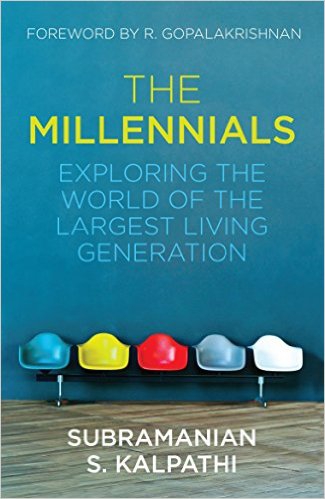Delving deeper into the world of the millennials, Subramanian S. Kalpathi’s book is a window to understand what drives this generation to think and work differently than their ancestors.
Millennials or the Gen Y, as we call them, forms a majority of the existing population in most organisations. With their growing existence comes a wind of change in the way businesses work. This generation is often seen as aggressive risk-takers, which the previous generations see as being disruptive and revolutionary. With the millennials changing the way businesses think and perform, organisations are also re-thinking the way they manage people and culture so as to optimally utilise the potential of this disruptive generation.
The Millennials – exploring the world of the largest living generation, is Subramanian S. Kalpathi’s first book, published by Penguin Random House India. Kalpathi, who is an engineer and a MBA graduate, is a millennial himself. He is a keen observer of how this generation is changing the paradigm of businesses in the current times.
Kalpathi’s work looks at the millennials and their attributes through seven lenses — motivation, culture, innovation, digital technology, collaboration, learning and leadership. Through these seven chapters, he narrates real interesting cases, from some breakthrough organisations, explaining the why and how of the way millennials think and act. With each case, he reveals a drive that led to an innovation or a disruption, either taking businesses to great heights or causing organisations to challenge their existing culture and practices.
In addition to engrossing storytelling in each chapter, the author shares key takeaways for both organisations and millennials. The insightful cases shared may seem familiar to the corporate thought-leaders at times, but manage to appeal to the readers. Moreover, what differentiates the book from theoretical monotony, making it a more interesting read, are some interesting and relevant quotes from famous authors and a few simplistic comprehensive figures and tables explaining situations and implications in the cases shared.
Born after 1980, the millennials, as Kalpathi puts it ‘are influenced by multiple factors such as their unique circumstances in life, their work environment, relationships with their managers and peers, external trends in the marketplace, technological and economic factors, and so on.’ Keeping in mind all these influencers, the book looks at various examples of Gen Y talent — millennial workers and entrepreneurs alike — from organisations across size and scale to come to interesting conclusions.
Talking of extrinsic and intrinsic motivation, to exploring the power of autonomy, mastery and purpose and then discussing the case for crafting authentic workplaces, where organisational values translate into meaningful outcomes, such as innovation and workplace agility, the book is a go-to guide for organisations and managers looking to demystify their Gen Y workforce.
The manuscript also highlights how the Gen Xers or baby boomers perceive the millennials and the impact of the existing gaps. Workplaces today are a mix of the three generations, and no one alone can take the organisation to success in isolation. Therefore, through his writing, the author also tries to offer suggestions to bridge the gaps, as he strongly believes that it is the responsibility of both the millennials and the older generations to do so.



